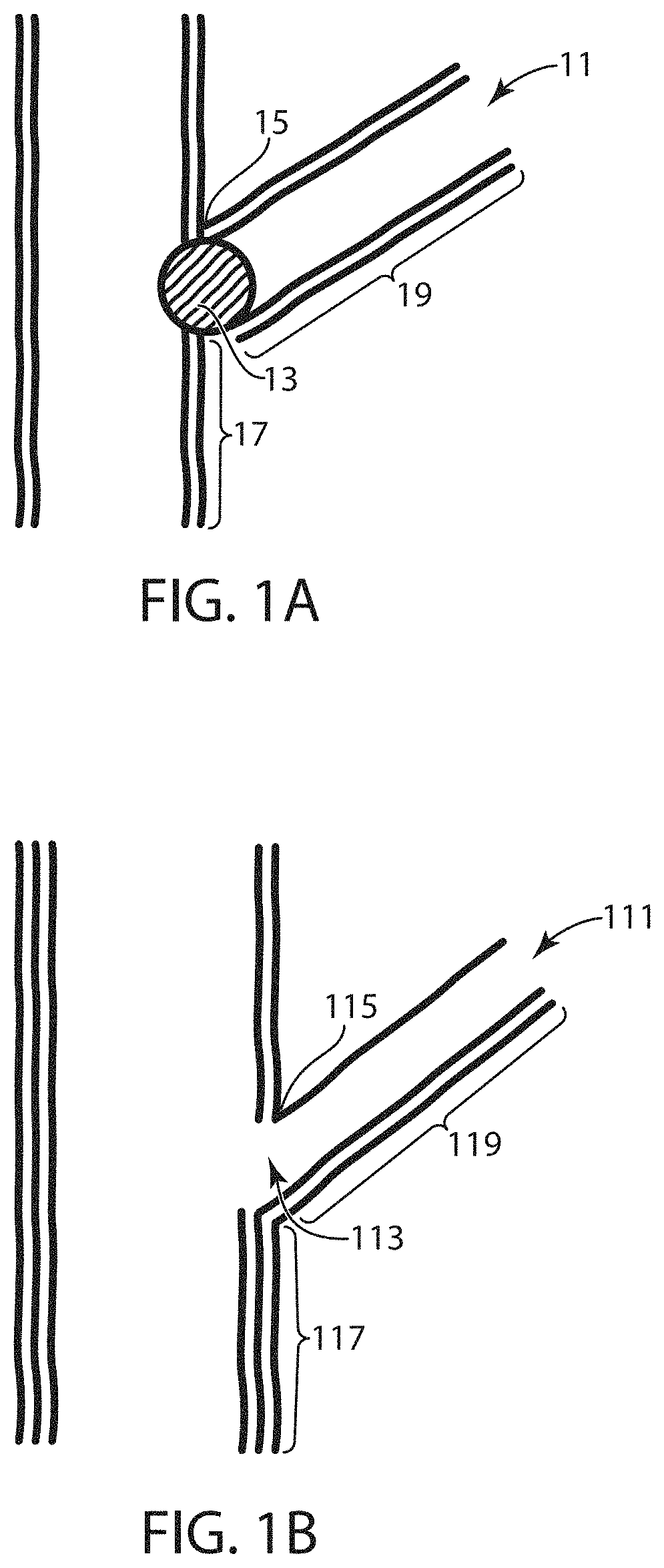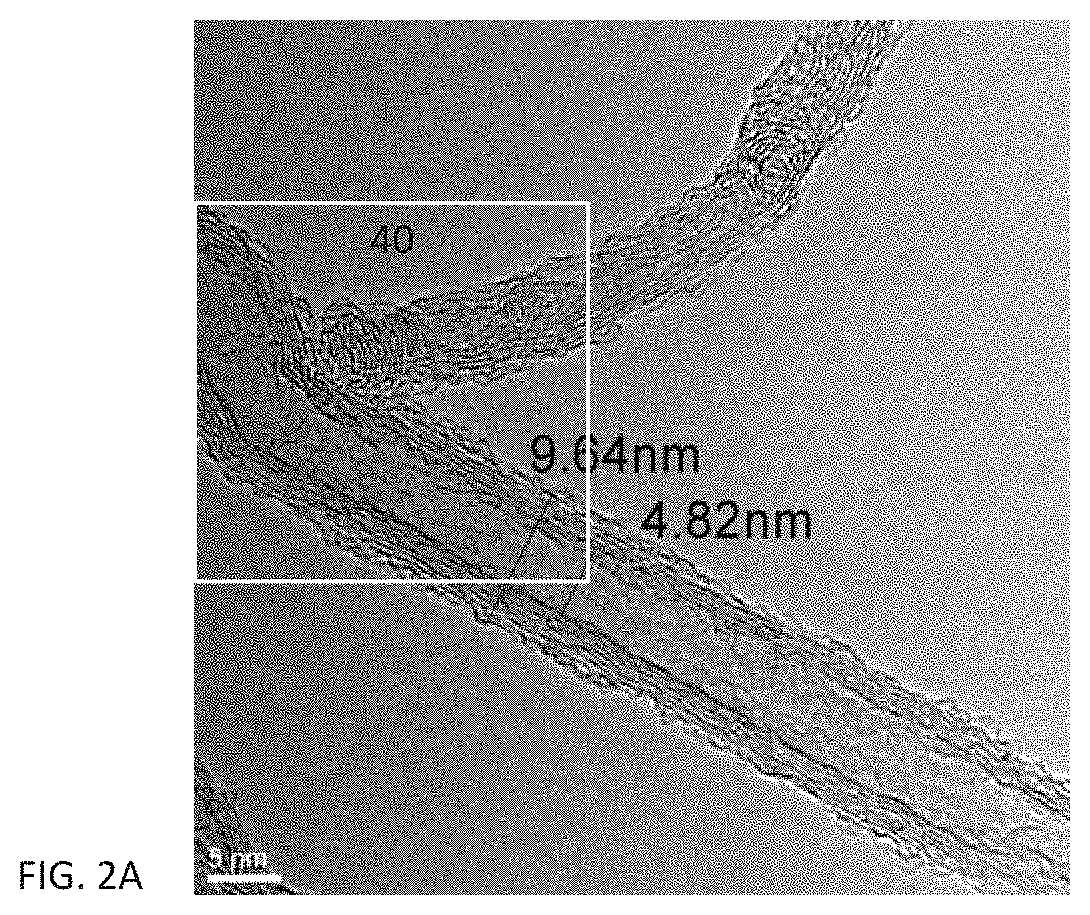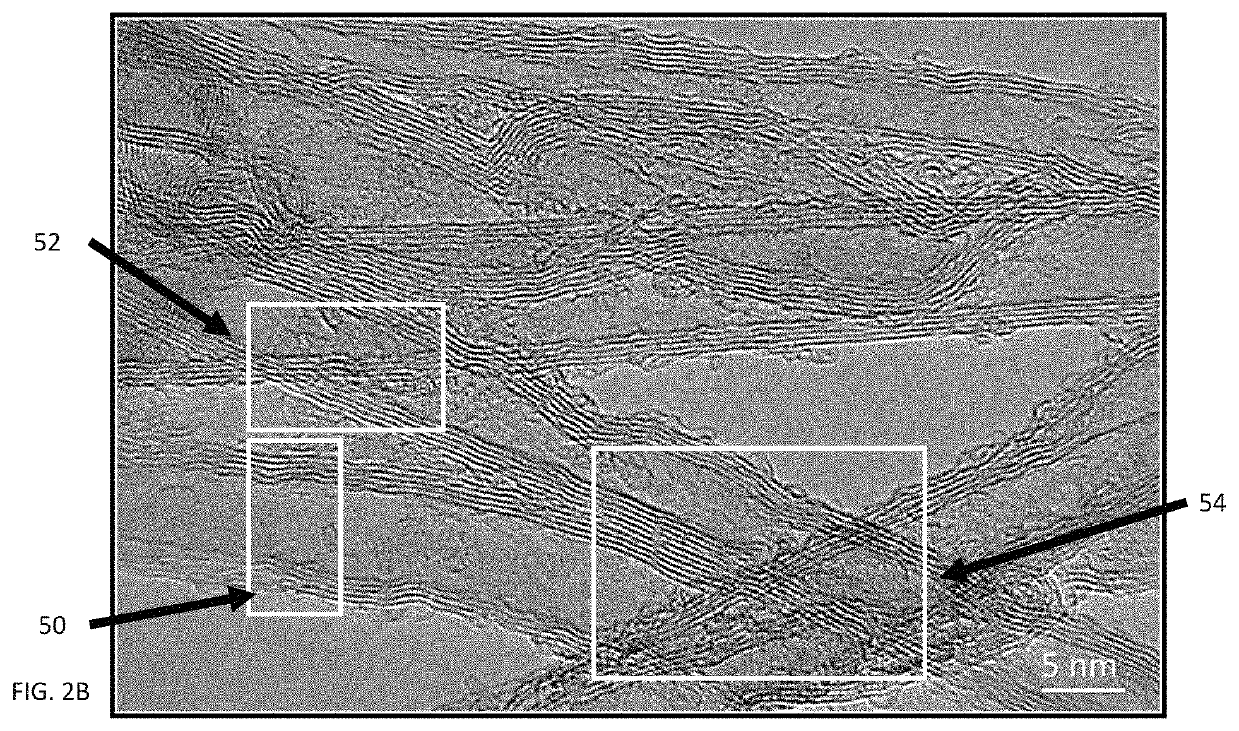Conductive photo-curable compositions for additive manufacturing
a technology of photocurable compositions and additive manufacturing, applied in the direction of photomechanical equipment, manufacturing tools, instruments, etc., can solve the problems of low electrical conductivity of resins, and achieve the effect of dissolving electrostatic charges
- Summary
- Abstract
- Description
- Claims
- Application Information
AI Technical Summary
Benefits of technology
Problems solved by technology
Method used
Image
Examples
example 2
[0252]PEG-coated carbon nanostructure particles (Applied Nanostructured Solutions LLC) were dispersed in Loctite 3D 3840 Gray resin to a loading of 0.05 wt. %, based on the total weight of the composition. To achieve a homogeneous dispersion, the CNS-resin mixture was homogenized in Misonix Sonicator® 3000 Ultrasonic Liquid sonicator at 100% amplitude. The sonication dispersing process was performed to have 10 second pulse sonication with a 5 second pausing to avoid overheating. The total sonication time was 20 min, with a total of 120 pulses. The obtained composition was provided to the Loctite PR10 (DLP) printer and circular discs (diameter 3 inches, thickness 2-3 mm) were successfully printed using the parameters listed in Table 1 (initial layers: to bond workpiece to build platform; default layers: to form workpiece; TAT: time at top=dwell time to allow raw material to flow under previous cured layer; rehab time: dwell time to allow resin to level; retraction speed up / down: spee...
examples 3-6
[0254]Examples 3-6 describe a direct mixing approach to prepare photocurable compositions containing 0.05% CNS. First, a mixture of Sartomer SR494 alkoxylated pentaerythritol tetraacrylate and Sartomer CN964 polyurethane acrylate resins (Arkema) (1:1 ratio by weight) was mixed in a MAX 200 mixing cup (FlackTek, Inc.) at 2000 rpm on a Speedmixer DAC 600.2 VAC (FlackTek) for total of 24 minutes, with the cup cooled in an ice / water bath for five minutes after every three minutes of mixing. Then, 20-25 g of the resin mixture and an appropriate amount of PEG-coated CNS to prepare a 0.05 wt % mixture were mixed in a MAX 100 cup (FlackTek, Inc.) in the Speedmixer at 2000 rpm. Mixing times and grinding media (ten 10 mm cylindrical grinding media (part number 501 400 from FlackTek) were varied as set forth in Table 3. For Examples 3 and 4, the mixture was stirred in the Speedmixer for 3 min without cooling. For Example 5, after 4 min of mixing, the mixture was cooled with ice water for 5 min...
examples 9-10
[0258]Examples 9-10 describe a CNS concentrate (1% CNS in resin) approach to prepare a photocurable composition containing 0% (comparative), 0.05% and 0.1% CNS. One part (w / w) CNS pellets was initially wetted in 49.5 parts Sartomer SR494 resin in a MAX 100 regular mixing cup using the Speedmixer DAC 600.2 VAC at 2000 rpm for a total mixing time of 3 min with ten 10 mm cylindrical grinding media (part number 501 400 from FlackTek Inc.) to form a paste-like dispersion. After each minute of mixing, the cup was cooled in an ice / water bath for five min. The resulting mixture was further mixed with 49.5 parts Sartomer CN964 resin at 2000 rpm with ten grinding media for five one minute intervals. The mixing cup was cooled in an ice water bath for five minutes following each mixing cycle. The level of dispersion of the CNS in the concentrate was evaluated with an optical microscope as described above. FIG. 6 shows that the CNS formed a fully dispersed network in the UV curable resin.
[0259]T...
PUM
| Property | Measurement | Unit |
|---|---|---|
| resistivity | aaaaa | aaaaa |
| wt. % | aaaaa | aaaaa |
| wt. % | aaaaa | aaaaa |
Abstract
Description
Claims
Application Information
 Login to View More
Login to View More - R&D
- Intellectual Property
- Life Sciences
- Materials
- Tech Scout
- Unparalleled Data Quality
- Higher Quality Content
- 60% Fewer Hallucinations
Browse by: Latest US Patents, China's latest patents, Technical Efficacy Thesaurus, Application Domain, Technology Topic, Popular Technical Reports.
© 2025 PatSnap. All rights reserved.Legal|Privacy policy|Modern Slavery Act Transparency Statement|Sitemap|About US| Contact US: help@patsnap.com



